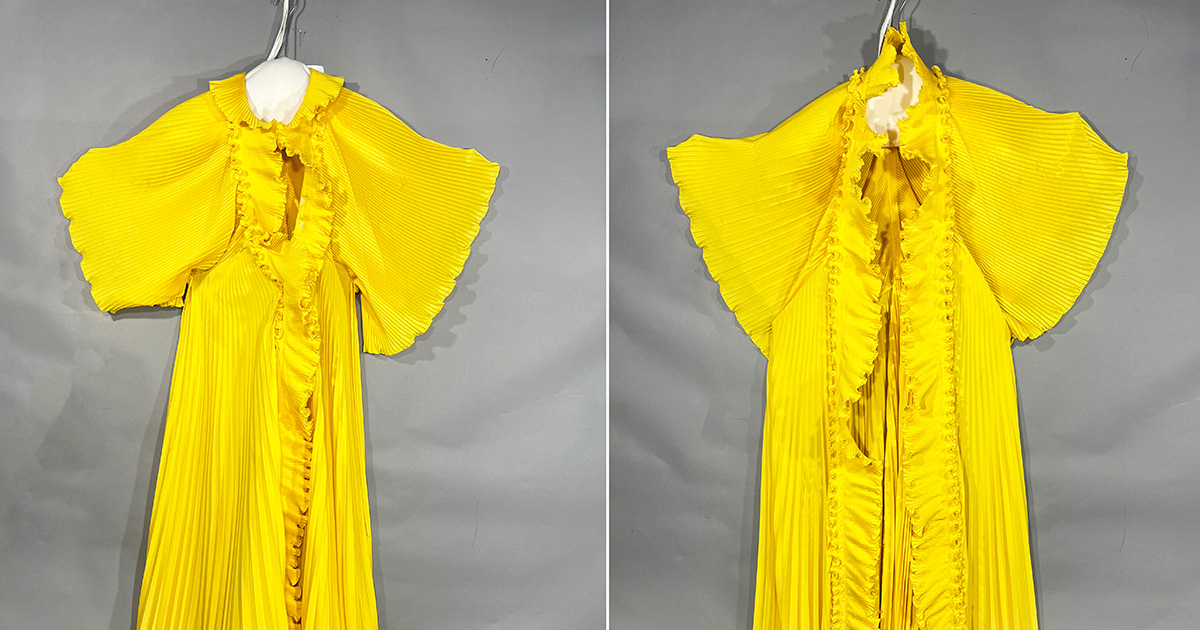- Events & Programs Home
- Calendar
- Accessibility
- Adults
-
Families & Teens
- Families & Teens Home
- 10x10 Teen Art Expo
- Art on the Rise
- Art Together: Art Making for Families with Children Ages 3–5
- Babies Sing with May Festival Minis
- Boy Scouts / Girl Scouts
- CAM Kids Day
- Family Storytime and Gallery Walk
- Family Studio: Art Making for Families with Children Ages 6–12
- Games in the Galleries
- Members-Only Baby Tours
- Public Baby Tours
- REC Reads
- Rosenthal Education Center (REC)
- Saturday Morning Art Class
- See Play Learn Kits
- Summer Camp
- Teen Fest: Zine and Comic Exchange
- RECreate
- Teachers
- Community Outreach
- Fundraisers
- Plan Your Own Event

- Events & Programs Home
- Calendar
- Accessibility
- Adults
-
Families & Teens
- Families & Teens Home
- 10x10 Teen Art Expo
- Art on the Rise
- Art Together: Art Making for Families with Children Ages 3–5
- Babies Sing with May Festival Minis
- Boy Scouts / Girl Scouts
- CAM Kids Day
- Family Storytime and Gallery Walk
- Family Studio: Art Making for Families with Children Ages 6–12
- Games in the Galleries
- Members-Only Baby Tours
- Public Baby Tours
- REC Reads
- Rosenthal Education Center (REC)
- Saturday Morning Art Class
- See Play Learn Kits
- Summer Camp
- Teen Fest: Zine and Comic Exchange
- RECreate
- Teachers
- Community Outreach
- Fundraisers
- Plan Your Own Event
Blog: CAM Uncovered
Blog: CAM Uncovered
- Home
- Plan Your Visit
- Art
-
Events & Programs
- Events & Programs Home
- Calendar
- Accessibility
- Adults
-
Families & Teens
- Families & Teens Home
- 10x10 Teen Art Expo
- Art on the Rise
- Art Together: Art Making for Families with Children Ages 3–5
- Babies Sing with May Festival Minis
- Boy Scouts / Girl Scouts
- CAM Kids Day
- Family Storytime and Gallery Walk
- Family Studio: Art Making for Families with Children Ages 6–12
- Games in the Galleries
- Members-Only Baby Tours
- Public Baby Tours
- REC Reads
- Rosenthal Education Center (REC)
- Saturday Morning Art Class
- See Play Learn Kits
- Summer Camp
- Teen Fest: Zine and Comic Exchange
- RECreate
- Teachers
- Community Outreach
- Fundraisers
- Plan Your Own Event
- Give & Join
- About
- Tickets
- Calendar
- Exhibitions
- Collections
- Blog
- Shop
Behind the Scenes in Conservation: The Light Touch
by Obie Linn, Conservator of Textiles
4/25/2024
textile conservation , CAMConservation , 1910s fashion
This week in the textile conservation lab, I am working on a day dress dating to the 1910s. It has a very delicate silk net stand-up collar edged with a metal ribbon and stiffened with wire stays. These delicate materials were damaged over time (100 years is a long time for silk net to be held up by wire!). Their delicacy also makes them very hard to patch and repair. Patching materials need to be as airy and fine as the original to blend in and attach with the lightest, most sensitive touch.
I used a patch of dyed silk net, the same color and weight as the original material. The patch is attached to the reverse of the original by stitching. Then the wire stay could be secured. The split edge of the metal ribbon was whip-stitched back together with a super-fine thread called Skala©.
There are a few more things to do for this dress. Stay tuned for more as we continue to make her look her best before she is installed in the gallery later this summer!
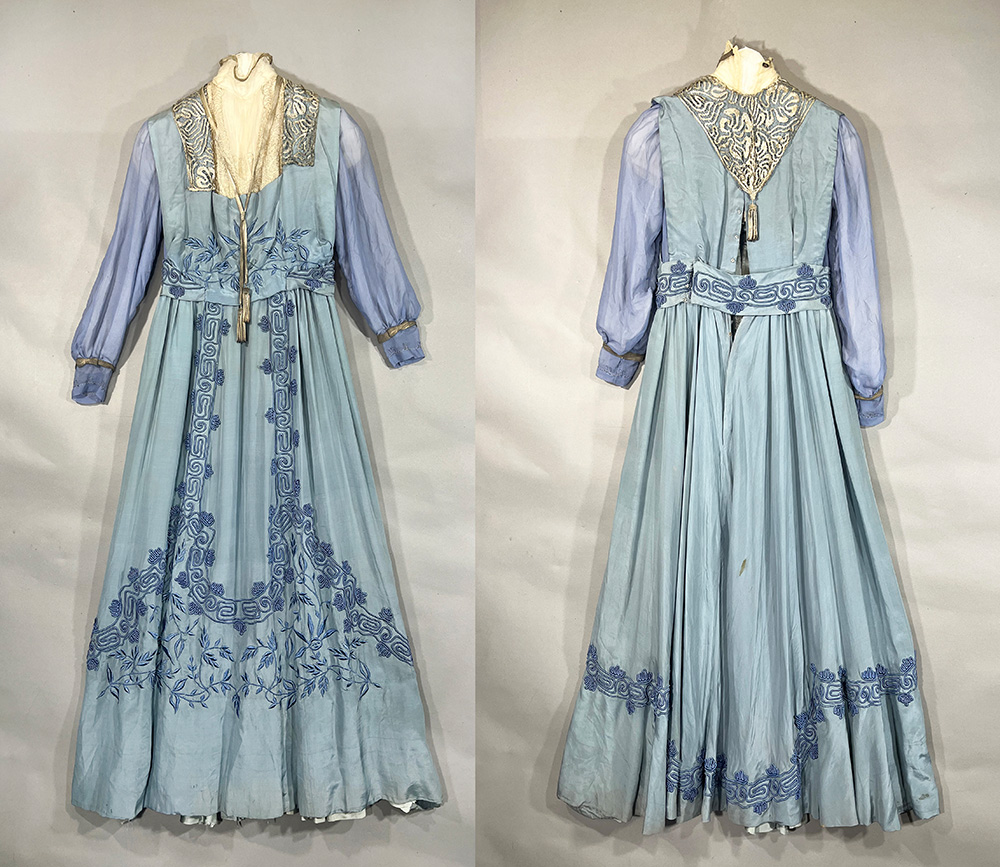
An overall picture of the dress front and back, before treatment.
Dress, 1910-1917, probably Cincinnati, OH, United States, silk, metal lace and ribbon, Gift of Mrs. R. J. Cravaack, 1985.176
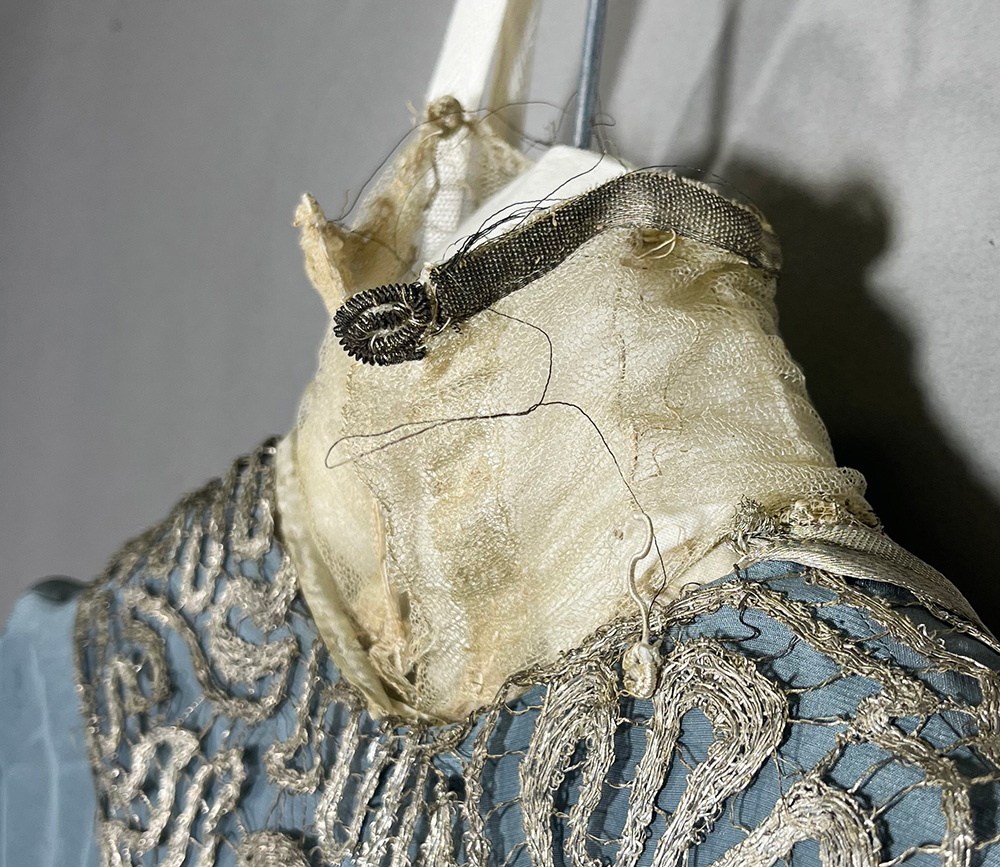
A detail of the damaged collar before treatment (from the back). You can see the loose, metal wire that has escaped from the top edge of the ribbon, the hole in the net at the base of the collar, and where the wire support is loose and has slipped out beneath the collar edge.
Dress, 1910-1917, probably Cincinnati, OH, United States, silk, metal lace and ribbon, Gift of Mrs. R. J. Cravaack, 1985.176

The collar on the workbench, a view from the interior during treatment. The metal spatula is pointing to the hole in the net.
Dress, 1910-1917, probably Cincinnati, OH, United States, silk, metal lace and ribbon, Gift of Mrs. R. J. Cravaack, 1985.176
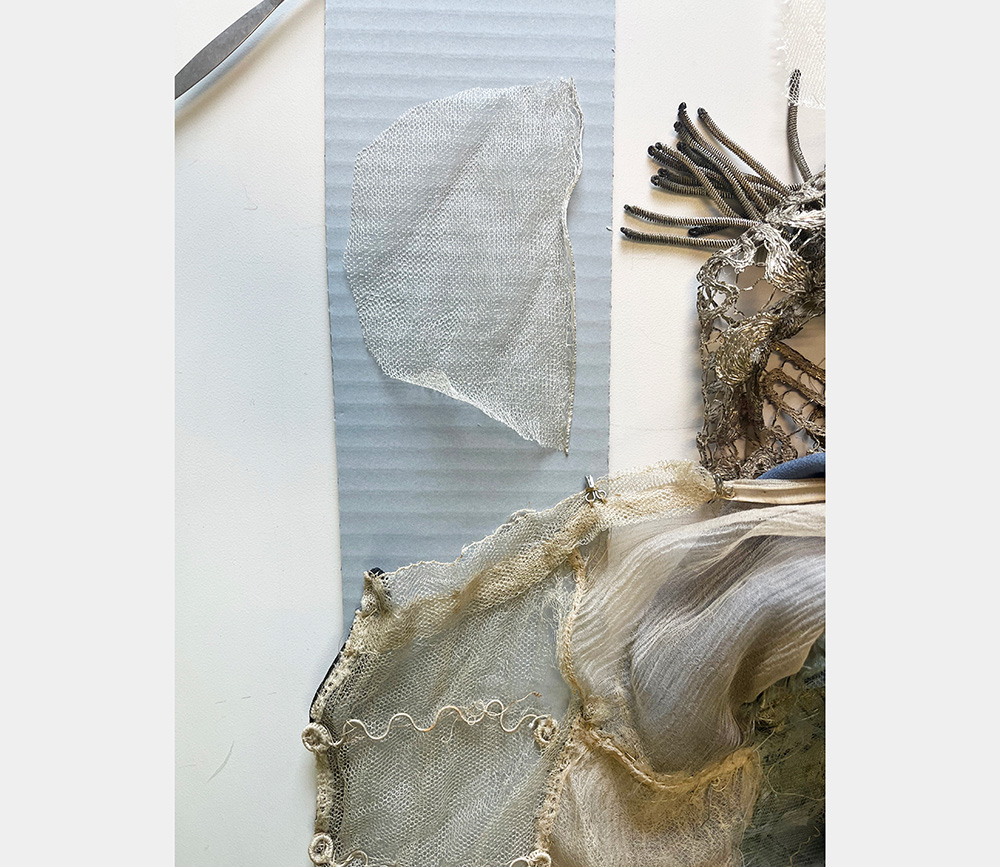
The patch material next to the collar on the workbench, prior to being trimmed and attached.
Dress, 1910-1917, probably Cincinnati, OH, United States, silk, metal lace and ribbon, Gift of Mrs. R. J. Cravaack, 1985.176
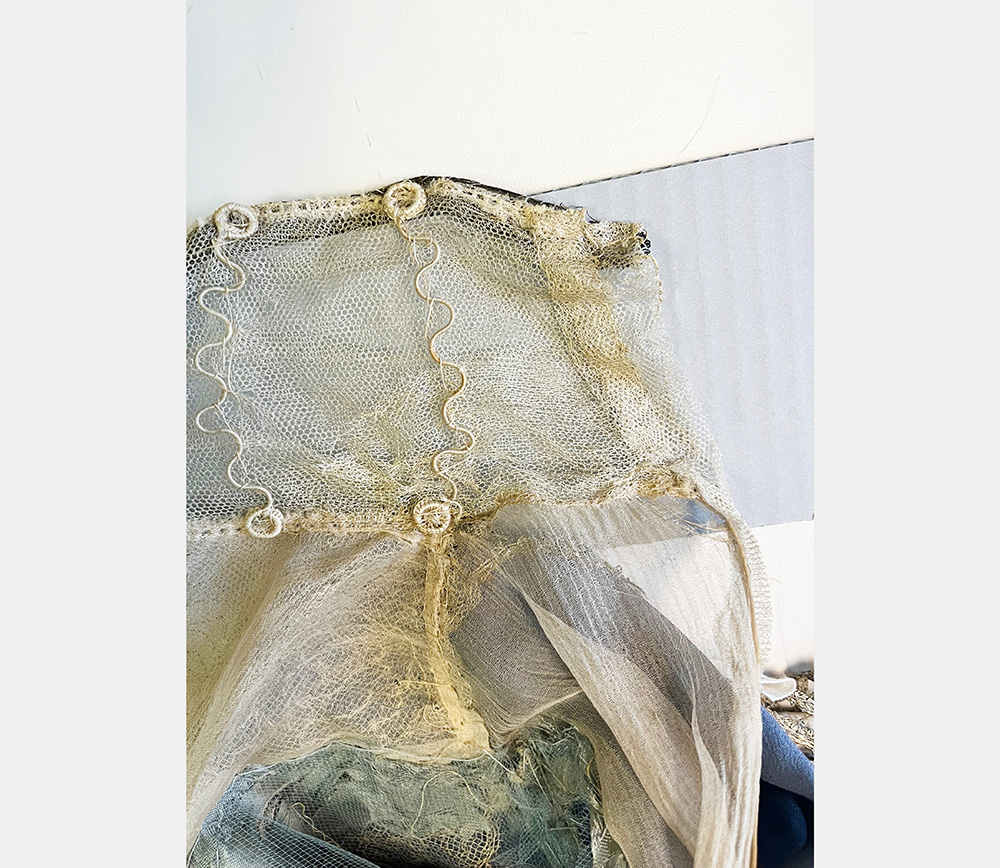
The collar on the workbench, a view from the interior during treatment with the patch and wire stay in position (the stays are those wavy things with circles at either end). From this view, it’s easier to see denser area created by the patching material against the airy collar. Will it blend well enough when viewed from the outside?
Dress, 1910-1917, probably Cincinnati, OH, United States, silk, metal lace and ribbon, Gift of Mrs. R. J. Cravaack, 1985.176
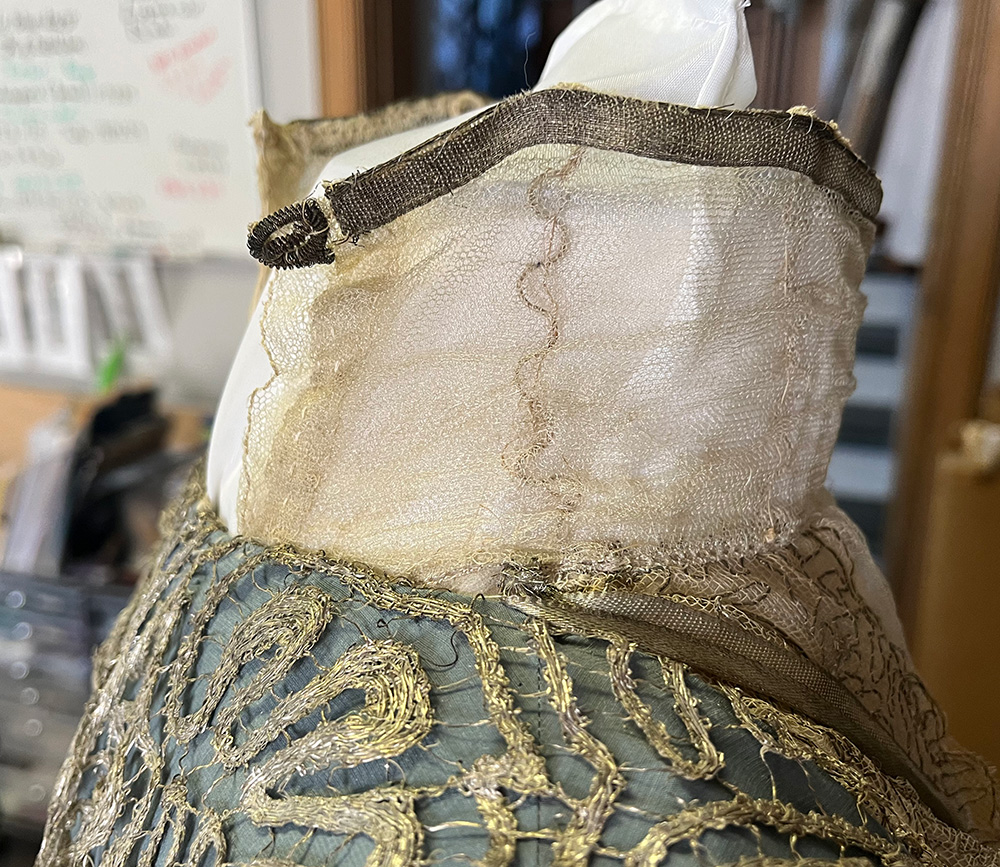
Looks much better! A detail of the collar after treatment. The hole is repaired, the stay is in position, the metal ribbon edge is back together.
Dress, 1910-1917, probably Cincinnati, OH, United States, silk, metal lace and ribbon, Gift of Mrs. R. J. Cravaack, 1985.176
Related Blog Posts

Cincinnati, OH 45202
Toll Free: 1 (877) 472-4226
Museum Hours
Museum Shop
Terrace Café
Library
Cincinnati Art Museum is supported by the tens of thousands of people who give generously to the annual ArtsWave Campaign, the region's primary source for arts funding.

Free general admission to the Cincinnati Art Museum is made possible by a gift from the Rosenthal Family Foundation. Exhibition pricing may vary. Parking at the Cincinnati Art Museum is free.
Generous support for our extended Thursday hours is provided by Art Bridges Foundation’s Access for All program.

General operating support provided by:



